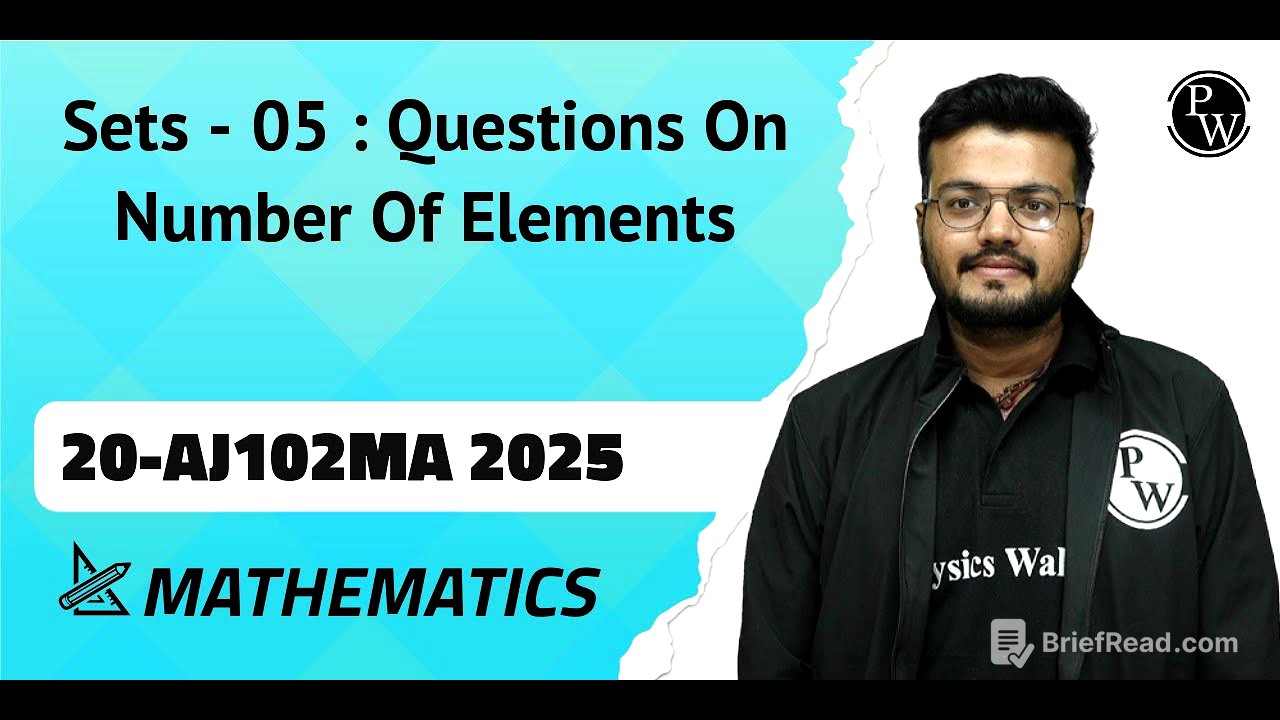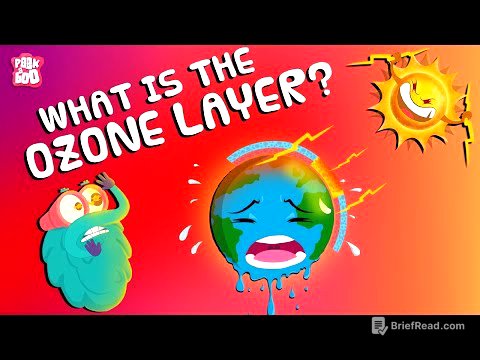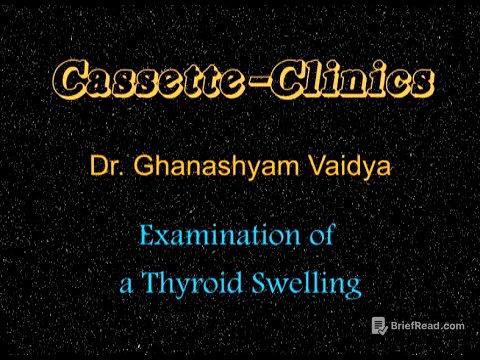TLDR;
This lecture focuses on solving problems related to the number of elements in sets, covering formulas for union, intersection, and symmetric difference. It explains how to apply these concepts when the universal set is either provided or not, and introduces a method for solving word problems involving two and three sets using Venn diagrams. The lecture also discusses maximizing and minimizing the number of elements in set operations.
- Formulas for union, intersection, and symmetric difference are explained.
- Methods for solving problems with and without a universal set are discussed.
- Venn diagrams are used to solve word problems involving two and three sets.
Introduction [0:01]
The lecture starts with a quick recap of set theory concepts like intersection, complement, and symmetric difference. The formula for symmetric difference, A - B union B - A, is highlighted, along with its interpretation as "only A" or "only B." The instructor mentions that while some formulas might not be directly useful now, they will be important in probability.
Formulas for Number of Elements in Sets [1:37]
The main topic is introduced: questions on the number of elements in sets. Two types of questions are discussed: those without a universal set and those with a universal set. The first key formula relates the number of elements in the union of two sets to their intersection: n(A union B) = n(A) + n(B) - n(A intersection B). This formula connects union and intersection and is useful in probability and PNC (Permutation and Combination).
More Formulas and Symmetric Difference [5:00]
The lecture moves on to formulas for A - B and B - A, emphasizing their importance in PNC and probability. The formula for A - B is n(A) - n(A intersection B). Then, the formula for the symmetric difference of two sets is discussed: n(A symmetric difference B) = n(A union B) - n(A intersection B), which can be expanded to n(A) + n(B) - 2 * n(A intersection B).
Example Problem: Minimizing and Maximizing Intersection [9:32]
An example problem is presented where n(A) = 7 and n(B) = 5. The task is to find the minimum and maximum values of n(A intersection B). When the universal set is not given, the minimum value of the intersection is 0 (when A and B are disjoint), and the maximum value is 5 (when B is a proper subset of A).
Maximizing and Minimizing Union [15:14]
Continuing with the same example, the lecture explains how to minimize and maximize n(A union B). The formula n(A union B) = n(A) + n(B) - n(A intersection B) is used. To minimize the union, the intersection should be maximized, resulting in n(A union B) = 7. To maximize the union, the intersection should be minimized, resulting in n(A union B) = 12.
Concept for Two Sets with Universal Set [20:03]
The lecture transitions to problems where a universal set is given. A Venn diagram is introduced with regions labeled as X, Y, Z, and T, representing elements in A only, A intersection B, B only, and outside both sets, respectively. Formulas for n(A), n(B), n(A intersection B), n(A union B), A - B, B - A, symmetric difference, A complement, B complement, and n(U) are derived based on these regions.
Example Problem with Two Sets and Universal Set [28:06]
An example problem is presented with n(A) = 6, n(B) = 7, n(A union B) = 9, and n(U) = 15. The goal is to find n(A intersection B), n(A - B complement), A symmetric difference B complement, and A complement. By setting up equations based on the Venn diagram regions (X, Y, Z, T) and solving them, the required values are found.
Word Problem: Tea and Coffee [37:06]
A word problem involving tea and coffee consumption is introduced. In a survey of 600 students, 150 take tea, 225 take coffee, and 100 take both. The task is to find the number of students taking neither tea nor coffee, tea but not coffee, not coffee, and exactly one of tea or coffee. The problem is solved by creating a Venn diagram, extracting information, and finding the values of X, Y, Z, and T.
Word Problem: Car and Bus [48:01]
Another word problem is presented: In a city, 20% of the population travels by car, 50% by bus, and 10% by both. The task is to find the percentage of people traveling by car or bus, only by bus, and exactly by one. The problem is solved similarly to the previous one, using a Venn diagram and extracting information.
Word Problem: Hindi and English [55:48]
A problem involving Hindi and English speakers is discussed. 100 students know Hindi, 50 know English, and 25 know both. If each student knows Hindi or English, the task is to find the total number of students in the group. The problem is solved by setting up equations and using the condition that n(U) = n(H union E).
Maximizing and Minimizing with Two Sets: Range Finding [1:01:13]
The lecture covers maximizing and minimizing values in set problems. A market research group surveys 1000 customers, with 720 liking product A and 450 liking product B. The task is to find the least number that must have liked both products. A two-step method is introduced: first, express all variables in terms of the variable whose range is to be found; second, use the condition that the number of elements must be greater than or equal to zero to find the range.
Homework and Introduction to Three Sets [1:19:39]
A homework problem is assigned, and the lecture transitions to three-set problems. A Venn diagram for three sets (A, B, C) is introduced, and the different regions are identified and named, such as "Only A," "Only B," "Only C," "Only A and B," "Only B and C," "Only A and C," "All three," and "Neither A nor B nor C."








![FREE MOVIE [Survival Suspense Horror FULL Movies by 412A TV] full length movie](https://wm-img.halpindev.com/p-briefread_c-10_b-10/urlb/aHR0cDovL2ltZy55b3V0dWJlLmNvbS92aS9La3NjUzJyZ0kyVS9ocWRlZmF1bHQuanBn.jpg)
